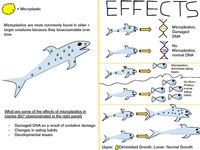
Photo from wikipedia
Cellular strategies and regulation of their crystallization mechanisms are essential to the formation of biominerals, and harnessing these strategies will be important for the future creation of novel non-native biominerals… Click to show full abstract
Cellular strategies and regulation of their crystallization mechanisms are essential to the formation of biominerals, and harnessing these strategies will be important for the future creation of novel non-native biominerals that recapitulate the impressive properties biominerals possess. Harnessing these biosynthetic strategies requires an understanding of the interplay between insoluble organic matrices, mineral precursors, and soluble organic and inorganic additives. Our long-range goal is to use a sea anemone model system (Nematostella vectensis) to examine the role of intrinsically disordered proteins (IDPs) found in native biomineral systems. Here, we study how ambient temperatures (25–37 °C) and seawater solution compositions (varying NaCl and Mg ratios) will affect the infiltration of organic matrices with calcium carbonate mineral precursors generated through a polymer-induced liquid-precursor (PILP) process. Fibrillar collagen matrices were used to assess whether solution conditions were suitable for intrafibrillar mineralization, and SEM with EDS was used to analyze mineral infiltration. Conditions of temperatures 30 °C and above and with low Mg:Ca ratios were determined to be suitable conditions for calcium carbonate infiltration. The information obtained from these observations may be useful for the manipulation and study of cellular secreted IDPs in our quest to create novel biosynthetic materials.
Journal Title: Biomimetics
Year Published: 2022
Link to full text (if available)
Share on Social Media: Sign Up to like & get
recommendations!